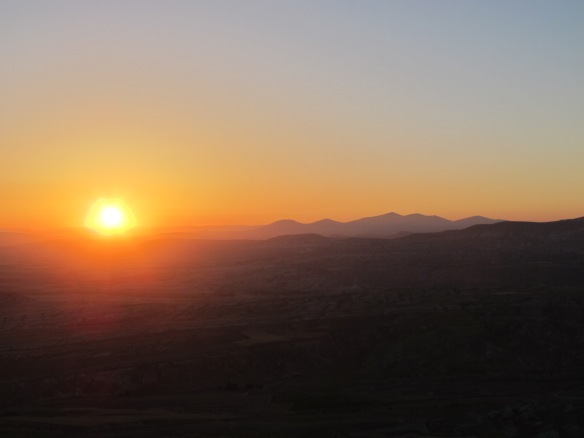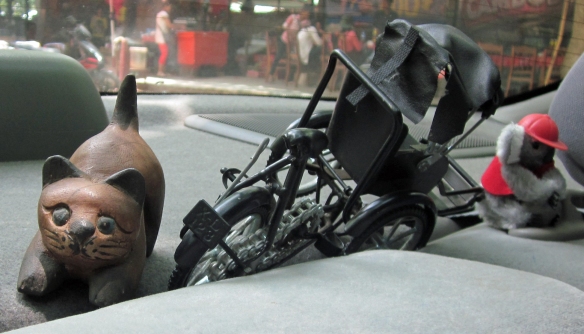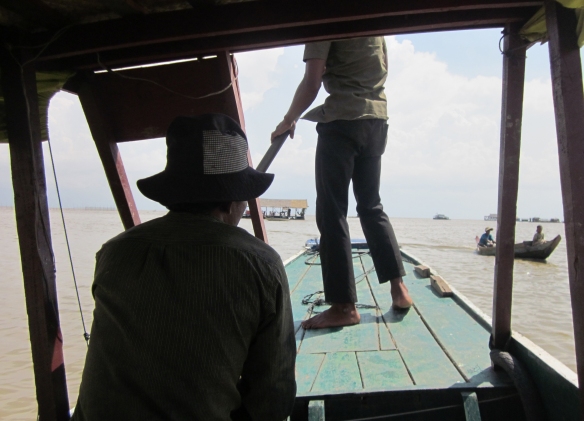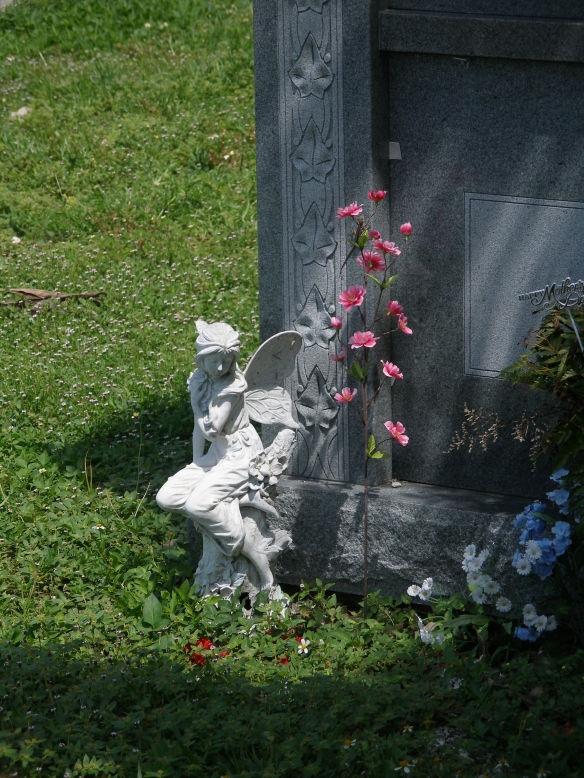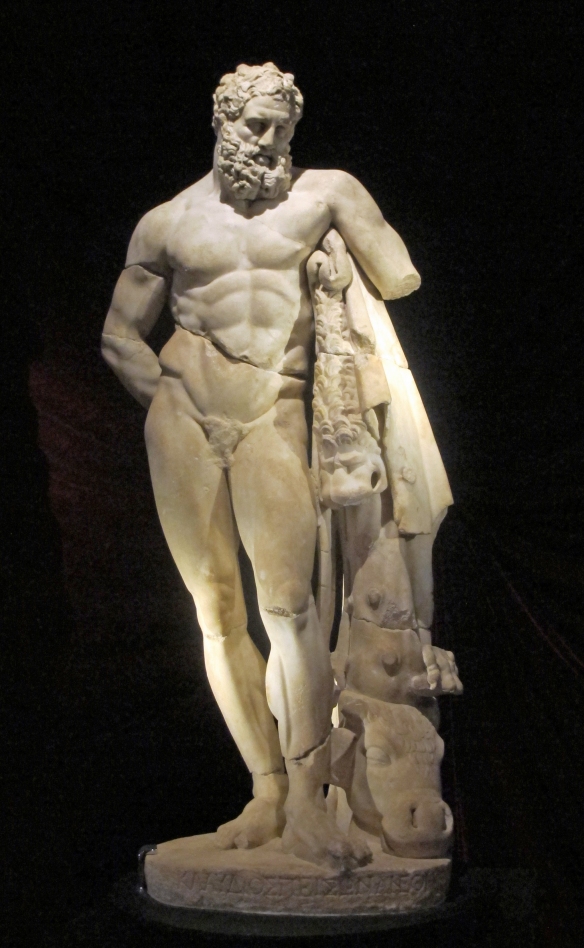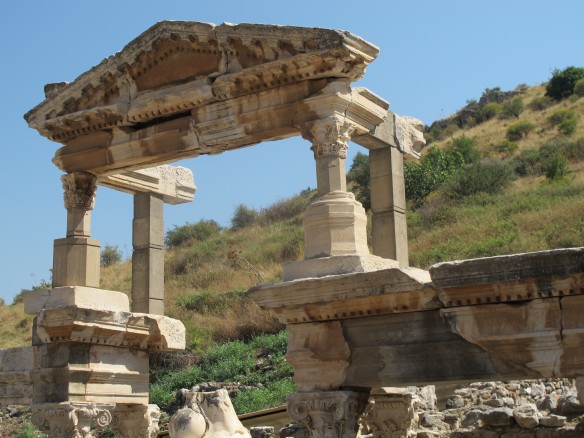Cappadocia, July 17
We arrive at the Dalton Brothers Horse Ranch shortly before 6 p.m. Lynn got thrown from a horse once too often as a kid, so it’s just Delaney, Kelsey, and me. As we drive up to the ranch, a large group of riders is ambling toward the rock formations a half mile away. It turns out that the evening ride started at 5:30, not 6:00 as our hotel desk clerk said when he called to make a reservation.
Not a problem, the ranch hand assures us, they can make something happen if we give them a few minutes to round up and saddle some more horses. Not a problem, I respond with the patience of an unhurried traveler happy to be spending a pleasantly warm late afternoon with his girls.
As the girls and I drink the tea they bring us to enjoy while we wait, I comment on how it’s good, particulary when traveling, to go with the flow and accept things as they unfold. Like our unexpected bus journey to the Saklikent Gorge, we don’t always have to be in control or know what’s happening next to have a thoroughly wonderful experience.
At 6:20, we head out with Muhammad, a young Afghan who’s lived in Turkey most of his life. Two young Taiwanese women were going to join us but one had never ridden a horse before and was too frightened to continue after she mounted her horse. So the four of us saunter towards the fairy chimneys and cliffs a half mile away.
I’m riding with the camera around my neck to capture the fantastic scenery. We periodically stop to exclaim profundities such as “Awesome!” and “Stoked!”
Just after I take the photo above, I hear one of the horses behind me running. I turn and no one is on it as it trots by me toward Muhammad who’s ahead of us, near the flag in the photo above. I then see Delaney lying on the ground. I shout for Muhammad as I clumsily dismount my horse and run back to her. She’s on her back, conscious but dazed and in obvious pain. Something spooked her horse. It bucked and Delaney was thrown off.
Kelsey joins me as does Mohammad a few second later. Delaney says she’ll catch her breath before getting up. She tries to sit up but can’t. Her right lower back hurts, so we tell her to just lie still while we get an ambulance. We make sure she has feeling in her extremities and can wiggle her toes and fingers.
We’re on the bluff over the cliff dwellings at Cavusin. At the top of the penultimate photo above is the same red flag visible in the last photo. This must be a popular hiking spot because there’s a little cafe carved into the rocks behind us. A man with a small red sedan offers to take Delaney down. No, I insist, we need an ambulance. It takes more than a couple minutes to communicate this request because we don’t speak Turkish and no one speaks English. I’m engaged in a very serious game of charades as I try to act out my request that someone please phone the hospital or the police to ask for an ambulance.
A dozen people gather. A man asks if we speak French. Kelsey lights up in relief and starts talking with him excitedly. He tells the others in Turkish that we’ll wait for the ambulance. He then disappears along with our ability to communicate with the people around us.
Meanwhile an angel from the cafe comes over to cradle Delaney’s head in her arms and coo soothingly while she rubs Delaney’s temples and dabs her face with a wet cloth.
Kelsey and I privately confer about the situation. We exchange the little bit of knowledge we have about dealing with a back injury and what we should do if Delaney goes into shock or passes out.
We comfort Delaney as we wait for the ambulance to arrive. I frequently ask her to wriggle her toes and confirm that she can feel me touch her feet and lower legs.
We finally hear it in the distance and then can see it speeding down the highway towards Cavusin. The driver is confused and can’t figure how to approach us. Several people on top of the bluff are waving and pointing to try to get the ambulance driver’s attention and direct him where to go.
Although the small red sedan was able to get up here, the ambulance is too big to drive up the narrow and steep dirt road to the top of the bluff. Muhammad appears with a backboard and is followed a copule minutes later by an overweight and out-of-breath EMT who apparently huffed part way up the hill with the backboard until Muhammad took over for him.
Delaney cries in silent pain as we roll her onto the backboard as gently as possible. We now realize that the safety straps are tangled. Rather than risk further injury by taking her off the backboard to fix the straps, we buckle the only one that works, the one across her shoulders.
Six of us pick up the backboard and start carrying Delaney toward the ambulance at the bottom of the bluff, perhaps 200 feet lower in altitude. The path is steep and the gravel is loose. I grip tighter and hope like hell that none of the other men slips, especially considering how Delaney is hardly strapped onto the backboard.
We make it to the bottom without mishap and I climb into the back of the ambulance with Delaney and the overweight EMT. Kelsey rides in the front passenger seat as the ambulance speeds off to the nearest hospital in Nevsehir, around 20 minutes away. The first part of the ride bounces over an uneven gravel road. Every jostle and jolt causes excruciating pain.














